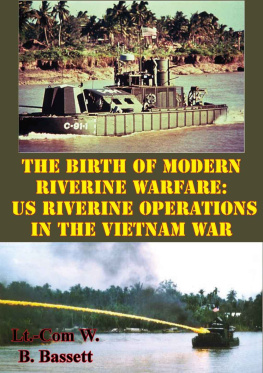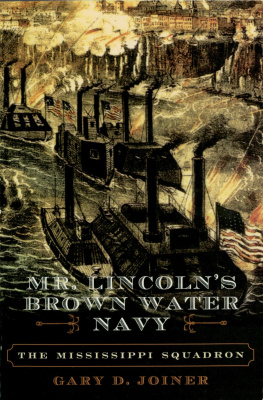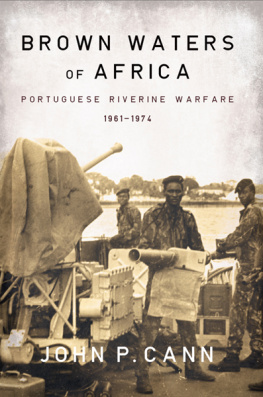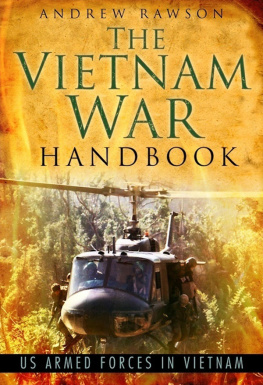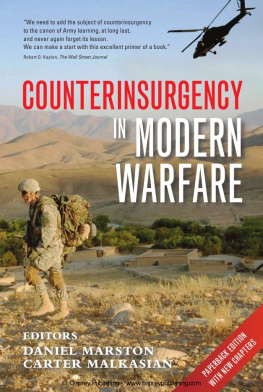William B. Bassett - The Birth Of Modern Riverine Warfare: US Riverine Operations In The Vietnam War
Here you can read online William B. Bassett - The Birth Of Modern Riverine Warfare: US Riverine Operations In The Vietnam War full text of the book (entire story) in english for free. Download pdf and epub, get meaning, cover and reviews about this ebook. year: 2014, publisher: Pickle Partners Publishing, genre: History. Description of the work, (preface) as well as reviews are available. Best literature library LitArk.com created for fans of good reading and offers a wide selection of genres:
Romance novel
Science fiction
Adventure
Detective
Science
History
Home and family
Prose
Art
Politics
Computer
Non-fiction
Religion
Business
Children
Humor
Choose a favorite category and find really read worthwhile books. Enjoy immersion in the world of imagination, feel the emotions of the characters or learn something new for yourself, make an fascinating discovery.
- Book:The Birth Of Modern Riverine Warfare: US Riverine Operations In The Vietnam War
- Author:
- Publisher:Pickle Partners Publishing
- Genre:
- Year:2014
- Rating:3 / 5
- Favourites:Add to favourites
- Your mark:
- 60
- 1
- 2
- 3
- 4
- 5
The Birth Of Modern Riverine Warfare: US Riverine Operations In The Vietnam War: summary, description and annotation
We offer to read an annotation, description, summary or preface (depends on what the author of the book "The Birth Of Modern Riverine Warfare: US Riverine Operations In The Vietnam War" wrote himself). If you haven't found the necessary information about the book — write in the comments, we will try to find it.
William B. Bassett: author's other books
Who wrote The Birth Of Modern Riverine Warfare: US Riverine Operations In The Vietnam War? Find out the surname, the name of the author of the book and a list of all author's works by series.
The Birth Of Modern Riverine Warfare: US Riverine Operations In The Vietnam War — read online for free the complete book (whole text) full work
Below is the text of the book, divided by pages. System saving the place of the last page read, allows you to conveniently read the book "The Birth Of Modern Riverine Warfare: US Riverine Operations In The Vietnam War" online for free, without having to search again every time where you left off. Put a bookmark, and you can go to the page where you finished reading at any time.
Font size:
Interval:
Bookmark:

This edition is published by PICKLE PARTNERS PUBLISHINGwww.picklepartnerspublishing.com
To join our mailing list for new titles or for issues with our books picklepublishing@gmail.com
Or on Facebook
Text originally published in 2006 under the same title.
Pickle Partners Publishing 2014, all rights reserved. No part of this publication may be reproduced, stored in a retrieval system or transmitted by any means, electrical, mechanical or otherwise without the written permission of the copyright holder.
Publishers Note
Although in most cases we have retained the Authors original spelling and grammar to authentically reproduce the work of the Author and the original intent of such material, some additional notes and clarifications have been added for the modern readers benefit.
We have also made every effort to include all maps and illustrations of the original edition the limitations of formatting do not allow of including larger maps, we will upload as many of these maps as possible.
THE BIRTH OF MODERN RIVERINE WARFARE: U.S. RIVERINE OPERATIONS IN THE VIETNAM WAR
William B. Bassett Lieutenant Commander, USN
Contents
This paper examines U.S. riverine operations in the Vietnam War. With the current drive to establish a riverine capability within the U.S. Armed Forces as an integral part of the GWOT and small wars of the future, the evolution and operation of the U.S. riverine force during the Vietnam War serves as an effective blueprint for the conduct of modern riverine warfare.
American riverine forces in Vietnam operated in a diverse range of brown and green water environments, successfully conducting a wide variety of missions. The evolution of these forces reflected the continuing need to develop the capabilities necessary for these operations. Their success was largely derived from experience which resulted in the creation of a variety of discrete riverine task forces specially configured for their specific missions as the situation dictated. U.S. riverine operations in Vietnam illustrate the complex nature of operations in brown and green water and the inherently joint requirement of the forces involved. The lessons learned as a result of these operations should be incorporated as a fundamental part of the creation of any modern riverine force.
In June of 2005 the Chief of Naval Operations called for the U.S. Navy to begin development of a riverine force and navy expeditionary combat battalion in order to expand the Navy's capabilities to prosecute the Global War on Terrorism (GWOT).
A large percentage of the world's population lives in close proximity of the seacoast or rivers. The vast majority of the world's commerce moves by sea through seaports along the coasts and rivers. In many parts of the world, rivers provide the only access to some regions. Conversely, the difficult terrain of brown water environments such as swamps, marshes and wetlands have historically provided sanctuary for insurgents. It is inevitable that these areas will play an important role in the GWOT and small wars of the future. Capability to operate in this domain is essential. Throughout history, this need has been no less important. The above statements echo similar sentiments expressed by leaders during the Vietnam War and many wars in the past. River and coastal warfare have always been an important part of the America's warfighting capability. Riverine and coastal operations played important roles in the French and Indian War, American Revolution, The War of 1812, the Second Seminole War, The American Civil War, Vietnam, and more recently in Iraq.
Traditionally (and currently in Iraq), America has relied on ad hoc riverine forces created from the available resources and tailored for specific circumstances. The complex nature of riverine warfare has generally defied the creation of standing riverine forces. Brown water operations are inherently joint. They require the close cooperation of forces able to operate on both land and water, and in the modern age, air. As such, riverine operations have never become the sole responsibility of any one service. Further, the extreme variation of brown and green water environments and the capabilities required to conduct a broad range of military operations in them makes the creation of a generic, standing riverine force difficult.
Riverine forces come in many shapes and sizes dependent on environment and mission capability, defying a one size fits all approach to force structure. Merely providing a small boat capability to operate on water does not imply the ability to operate effectively to successfully achieve specific mission objectives. No war in the modern era illustrates this fundamental nature of riverine warfare better than the Vietnam War. The riverine aspects of the war in Vietnam provide an invaluable study for the creation and employment of a modern riverine force. The nature of the geography and demographics in Vietnam ultimately made control of the rivers and coastal regions vital. To meet this need, the U.S. created the first modern riverine force, adapting civilian and military small craft as necessary and relearning tactics and establishing informal doctrine through experience. The immense scope of the river and coastal operations undertaken by the U.S. and its allies in this war resulted in the creation of the largest and most capable riverine force in history. Operations were conducted in a wide variety of environments, from shallow coastal waters to rivers and small canals to marshes and dense mangrove swamps, flooded grasslands and rice paddies, even urban areas. The riverine forces conducted a wide range of missions including coastal interdiction, river patrol, river assault, convoy protection and psychological operations.
To reflect the complexities of these operations, the riverine force grew to include five distinctly different task forces with different missions, tactics and force compositions. As critical new mission areas were identified, forces were specially created to meet those needs. Each task force ultimately developed its own unique joint flavor as the situation warranted. This evolutionary process resulted in the creation of an extremely adaptive riverine force that still bears study today.
The country of South Vietnam comprised a land area roughly the size of California with 1,435 miles of coastline gently curving along the South China Sea. These extensive coastal and river areas formed a dominant feature in the struggle for South Vietnam.
"Control of the waterways of Vietnam also implies control of a large part of that county's population. Vast numbers of people live on or near the rivers, canals and seacoasts. Waterborne transportation is relied upon almost exclusively in the rural areas for movement of goods and crops to market, and for inter-village communications. Fish from the rivers and seas are an important staple in the Vietnamese diet. Wet rice farming, the principal agricultural activity, requires an intricate system of irrigation dikes and canals. It was inevitable that a significant phase of the counterinsurgency war in Vietnam would be fought on water."
While contemporary American involvement in Vietnam began in 1950 with limited advisory and military assistance to the French and later to the South Vietnamese forces, by the early 1960s American military leaders realized that the stabilization of South Vietnam would require an increased role by U.S. forces. In June 1961, the CNO cited an urgent need for the U.S. Navy to assume naval responsibilities in the waterways and rivers in South Vietnam. In 1964 the Bucklew report concluded that the significant level of infiltration from the North and the general lack of resistance by the Vietnamese Navy warranted an increased U.S. naval presence. These concerns would be galvanized into actions as the result of an incident in a remote bay on the coast of South Vietnam.
Next pageFont size:
Interval:
Bookmark:
Similar books «The Birth Of Modern Riverine Warfare: US Riverine Operations In The Vietnam War»
Look at similar books to The Birth Of Modern Riverine Warfare: US Riverine Operations In The Vietnam War. We have selected literature similar in name and meaning in the hope of providing readers with more options to find new, interesting, not yet read works.
Discussion, reviews of the book The Birth Of Modern Riverine Warfare: US Riverine Operations In The Vietnam War and just readers' own opinions. Leave your comments, write what you think about the work, its meaning or the main characters. Specify what exactly you liked and what you didn't like, and why you think so.

